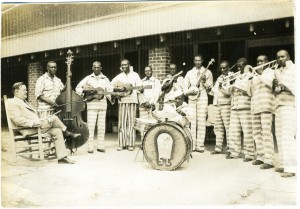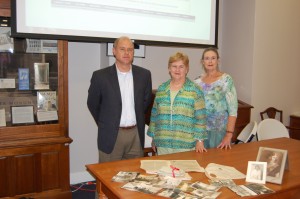 It was more than 80 years ago, when Martha Alice Stewart walked into the Mississippi State Penitentiary known as Parchman Farm to assume her role as head nurse. She was one of few to get an inside glimpse between the walls that make up the most notorious penitentiary in the South.
It was more than 80 years ago, when Martha Alice Stewart walked into the Mississippi State Penitentiary known as Parchman Farm to assume her role as head nurse. She was one of few to get an inside glimpse between the walls that make up the most notorious penitentiary in the South.
The public can share in her experience by visiting Archives and Special Collections at the University of Mississippi, where a new collection donated by Stewart’s family is housed. The “Martha Alice Stewart: Time on Parchman Farm, 1930s Collection” comprises photos and other materials related to the penitentiary. While working at Parchman for nearly a decade, Stewart accumulated a collection of nearly 200 black and white photos portraying life inside the prison, as well as nursing documents, personal cards and even a letter from a former inmate.
“This collection will fill in a gap we have about the history of Parchman Farm,” said Pamela Williamson, curator of visual collections and assistant professor. “The images in the collection will benefit researchers by providing visual insight into the state’s self-sustaining penitentiary. They capture a piece of Mississippi history that has not previously been seen.”
“Time on Parchman Farm, 1930s” an exhibition featuring approximately 80 items from the collection is on display at the University Museum until Dec. 19. Items on exhibit include photographs, holiday cards, personal correspondence and other material related to Alice’s nursing career. In addition there are items that tell the story of Pap Tabor, an “inmate who refused two gubernatorial pardons because he had food, a job, a bed and the opportunity to fish all inside the prison,” said Robert Saarnio, director of the University Museum. An opening reception was held Sept. 25 at the museum as part of the Oxford Art Crawl.
“It’s rare for images of Parchman to emerge from inside its confines, and the portrait of the farm as a working agricultural environment, along with depictions of the daily lives of inmates, guards and wardens, is a compelling one,” said Saarnio. “The show represents a great partnership between the museum and the university’s Archives and Special Collections teams.”

(From left) Bryan King, Catherine King and Kate Stewart donated historical material from Parchman prison to Archives and Special Collections.
Stewart’s two nieces Kate Stewart and Catherine King, and great-nephew Bryan King, recently donated the collection to Ole Miss so that this important piece of Mississippi history would be forever preserved and available for public viewing. Kate Stewart and Bryan King are both Ole Miss alumni.
“The pictures and letters have been in an album upstairs in the old family home for years,” said Kate Stewart, who is a professor of English at the University of Arkansas at Monticello. “It is a rare look into the 1930s and an aspect of history that people normally do not think about, so we wanted to share it with others.”
The prison, which is the oldest in the state of Mississippi, was established in 1901 and has been housing prisoners for more than 100 years. It serves as a self-sufficient farm in which prisoners are used as labor to maintain the grounds.
The process of piecing this collection together has been ongoing for nearly four years and was officially donated in early June 2012.
For more information, contact Pamela Williamson at pmw@olemiss.edu or 662-915-5851.